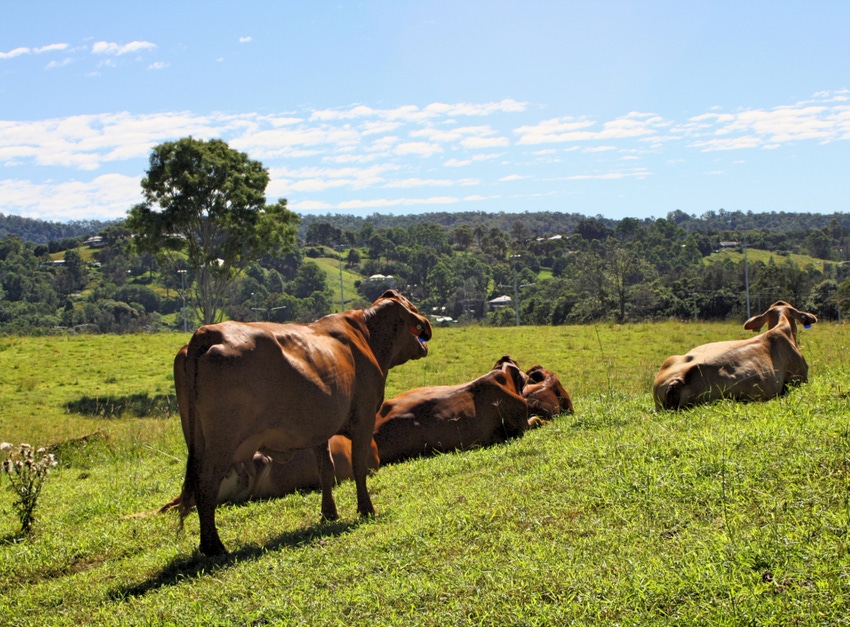Understanding parasite life cycle and strategic treatment can help improve performance in all stages of cattle production.
August 16, 2019

It’s no secret that heavy worm loads negatively affect overall beef cattle herd health and producers’ bottom lines. In fact, parasitic infections have been estimated to cost livestock producers more than $3 billion in economic losses each year, according to Boehringer Ingelheim.
“The infestation of brown stomach worm and other internal parasites can suppress appetite and reduce feed intake, resulting in disappointing average daily gains and weaning weights. It can also lead to problems with reproduction in cows and heifers,” said Dr. Joe Gillespie with Boehringer Ingelheim. “Controlling these parasites is a proven practice to improve performance in all stages of cattle production while also giving you a significant return on investment.”
As concern about the resistance of cattle parasites to anthelmintics continues to rise, gaining a basic understanding of the internal parasites that affect a cattle herd is the first step producers can take to establish a cost-effective deworming approach. Gillespie explained a basic parasite life cycle:
1. Adult parasites lay eggs in the gastrointestinal tract of cattle.
2. Eggs are expelled from the cattle through feces.
3. Eggs hatch and develop into infected larvae.
4. The infected larvae crawl onto the grass that cattle graze on. Feed bunks or waterers contaminated with feces can also expose cattle to larvae.
5. Larvae are ingested by cattle.
Gillespie added that this process will continue to repeat itself unless parasites are managed. At the end of the grazing season, some internal parasites, such as the brown stomach worm (Ostertagia ostertagi), will bury themselves in the stomach wall, stay dormant until spring, emerge and start egg-laying again.
“Knowing the life cycle of internal parasites can help producers establish an appropriate deworming timeline,” Gillespie said. “It’s also important to note that there are technically four larval stages, and not all dewormers are labeled to protect cattle against the final larval stage.”
To prevent parasite resistance, reduce subsequent contamination of pastures and provide cost-effective parasite control, Gillespie recommended using an anthelmintic with demonstrated efficacy against major intestinal parasites, including O. ostertagi L4 and inhibited L4, as well as tapeworms, prior to the grazing season.
Not only is it beneficial for producers to be strategic in selecting the right dewormer(s), but he also encouraged producers to weigh calves to determine the right dose and work with their veterinarian to identify the best time to treat cattle.
Timing is everything
Parasite populations vary widely, depending on climate, geography and type of operation. In general, temperatures between 60°F and 80°F, and with at least 2 in. of rainfall per month, provide excellent propagation conditions. Gillespie said it’s important to take all environmental considerations into account when deciding on the timing of treatment.
“With a high stocking rate in pastures, I recommend using a dewormer twice per year to help keep animals on track,” he said. “Most producers use some form of dewormer in the spring as cattle go out to pasture. A second treatment should be given in late fall or early winter, along with a lice control to help manage ectoparasites, as well.”
In the cattle feeding sector, it is common to see an oral dewormer used upon arrival at the feedyard and a corresponding topical treatment used to help with flies or lice. “With a high-energy, high-starch diet and no grazing, fewer internal parasites are seen, but they can become a problem, so deworming upon entry is the best strategy,” Gillespie added.
Veterinarians can help producers perform routine fecal egg counts to ensure that their dewormer is working effectively.
“An effective deworming program doesn’t look the same for every operation,” Gillespie noted. “Understanding the parasite life cycle, identifying key timing and keeping your veterinarian involved are all great ways for producers to control parasites in every herd without breaking the bank.”
Source: Boehringer Ingelheim, which is solely responsible for the information provided and is wholly owned by the source. Informa Business Media and all its subsidiaries are not responsible for any of the content contained in this information asset.
You May Also Like


.png?width=300&auto=webp&quality=80&disable=upscale)
